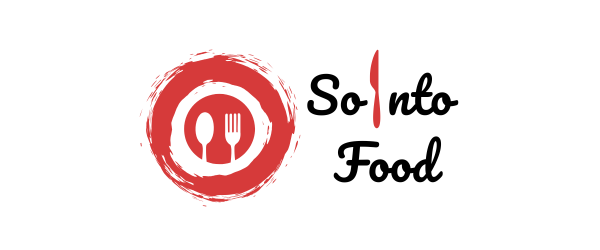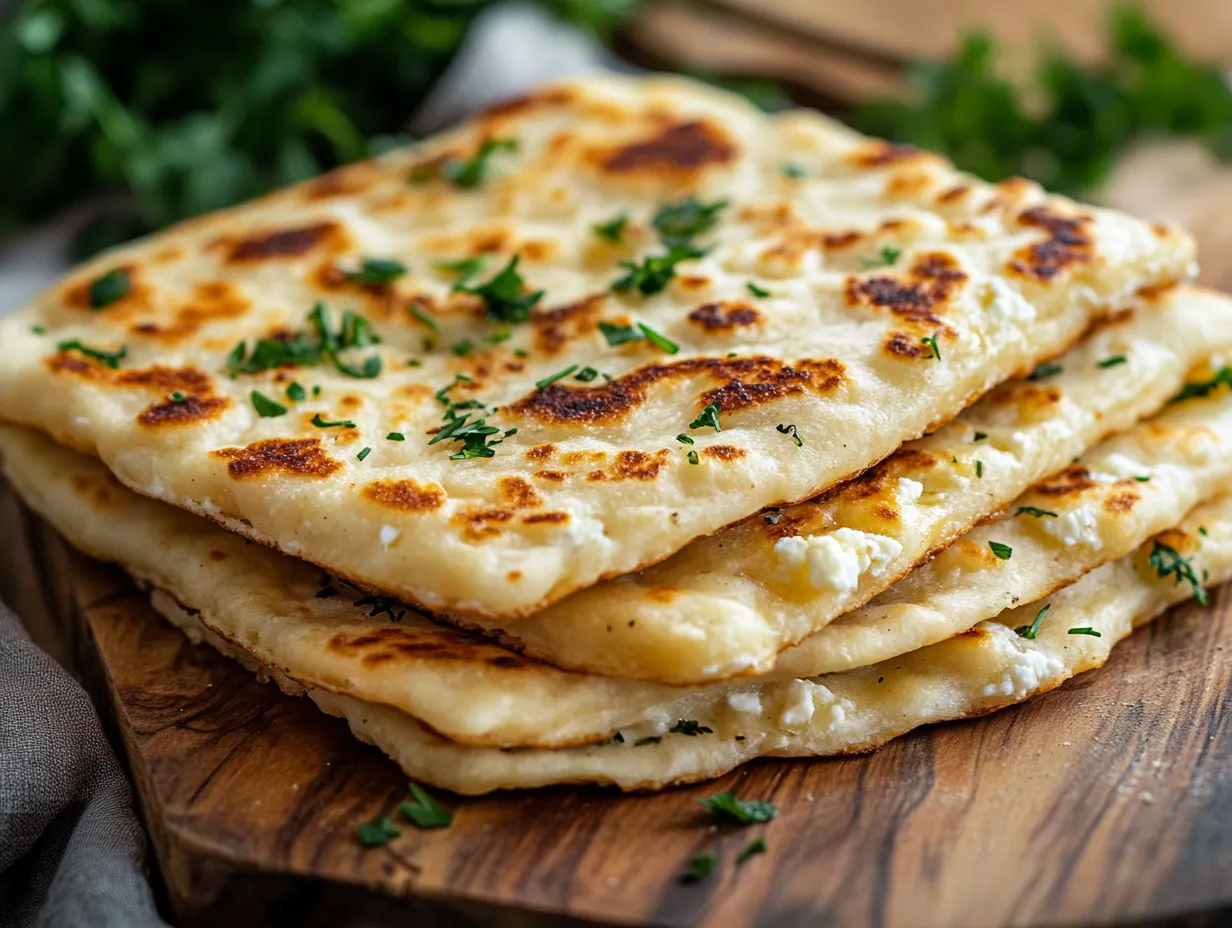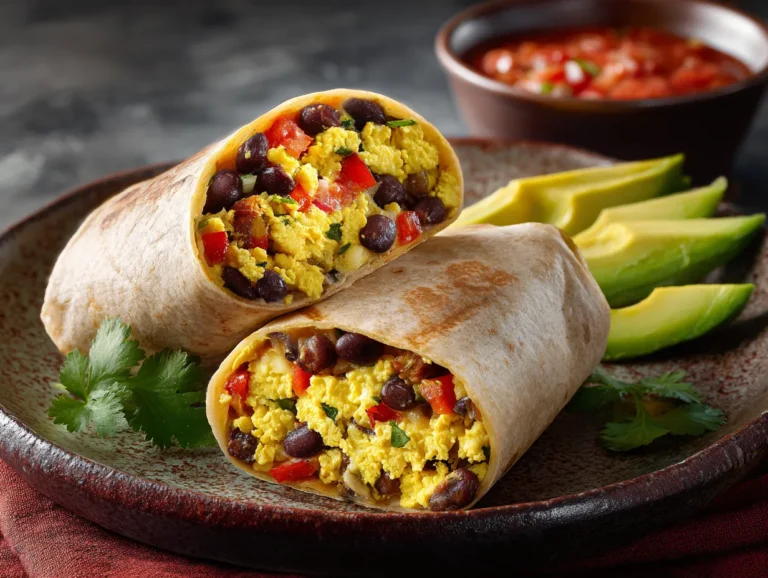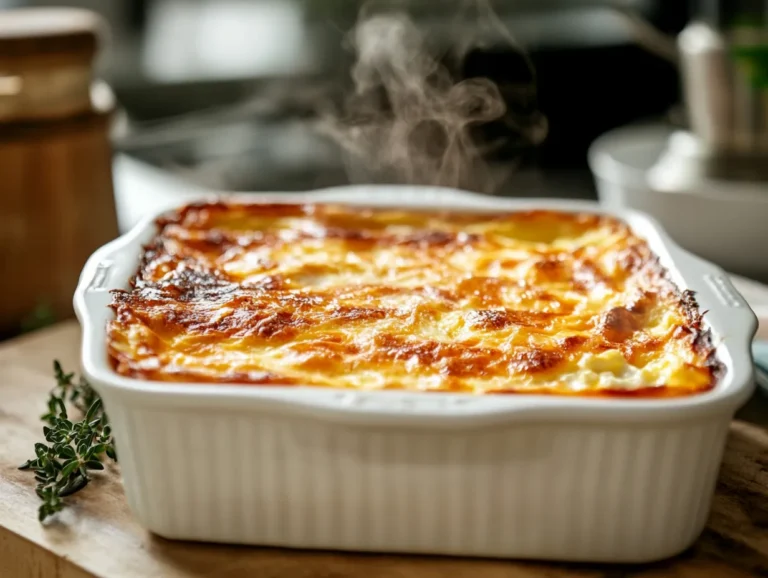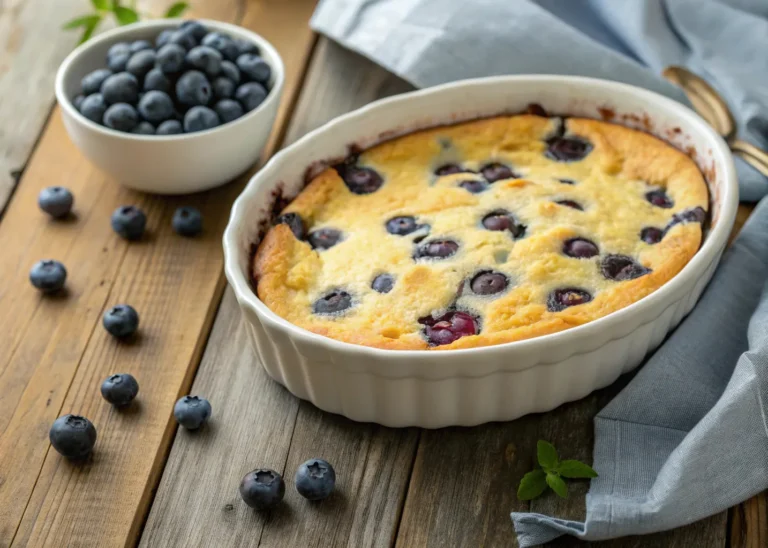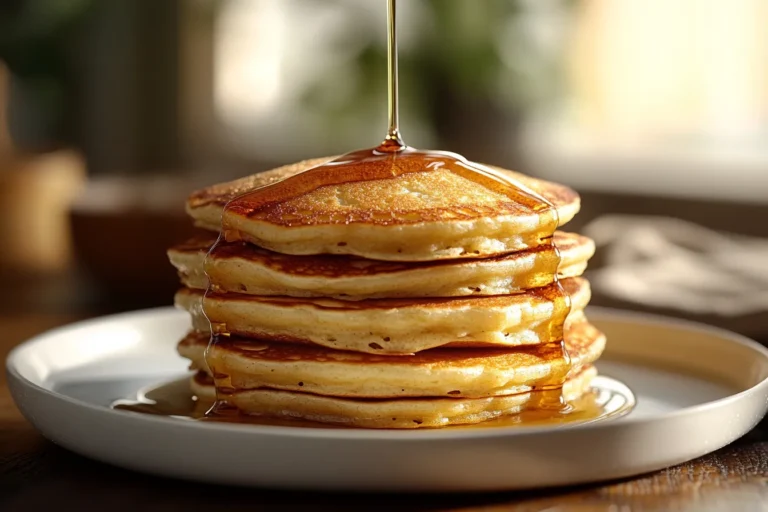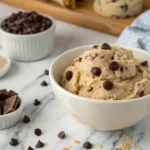I never thought I’d say this, but cottage cheese flatbread completely changed how I make bread at home.
I used to think flatbread had to be all flour, a little oil, and some water… until I randomly blended cottage cheese into a dough one day out of curiosity (and honestly, just trying to use up what was in the fridge). The result? This ridiculously soft, slightly crisp, high-protein cottage cheese flatbread that I now make on repeat—at least twice a week.
No yeast. No weird ingredients. Just a few pantry basics and that one unexpected star: cottage cheese.
Check out these cottage cheese bagels if you love baking with high-protein ingredients.
This post is for you if:
- You’re trying to eat more protein without adding meat
- You want something you can make in under 20 minutes
- You’re tired of dense, flavorless low-carb bread
Let me show you exactly how I make this easy flatbread with cottage cheese, with tips I’ve learned from testing it over and over. Trust me—once you try it, you’re not going back.
Why This Cottage Cheese Flatbread Works So Well
So, what’s the big deal with this flatbread? Let me break it down, because once I started making it, I couldn’t stop tweaking and perfecting it.
It’s Protein-Packed and Actually Tastes Good
Let’s be honest—most high-protein breads are either rubbery or dry. But cottage cheese does something magical here. It adds moisture and structure without making it feel heavy. One cottage cheese flatbread gives you a solid dose of protein, and it’s way more satisfying than anything store-bought.
It’s honestly become a staple after workouts or when I need a quick breakfast with eggs or avocado.
Perfect If You’re Gluten-Free or Watching Carbs
I’ve made this with oat flour, almond flour, even chickpea flour—and it still works. I personally love it with a gluten-free flour blend when I want to keep it light. No bloat, no crash. It’s also a lifesaver if you’re avoiding bread but still want to wrap something or have a legit base for toppings.
And because there’s no yeast involved, there’s no rising time. Just mix, flatten, and cook. You’re done in minutes.
It Works for Literally Everything
Sometimes I use cottage cheese flatbread as a wrap. Sometimes it’s a quick pizza base. And other times, I slice it into triangles and dip it into homemade hummus or soup.
It’s one of those recipes that adapts to whatever you’ve got going on—whether you’re meal prepping, making dinner for picky eaters, or just need a snack that feels more like real food than a protein bar.
Simple Ingredients for a Powerful Cottage Cheese Flatbread
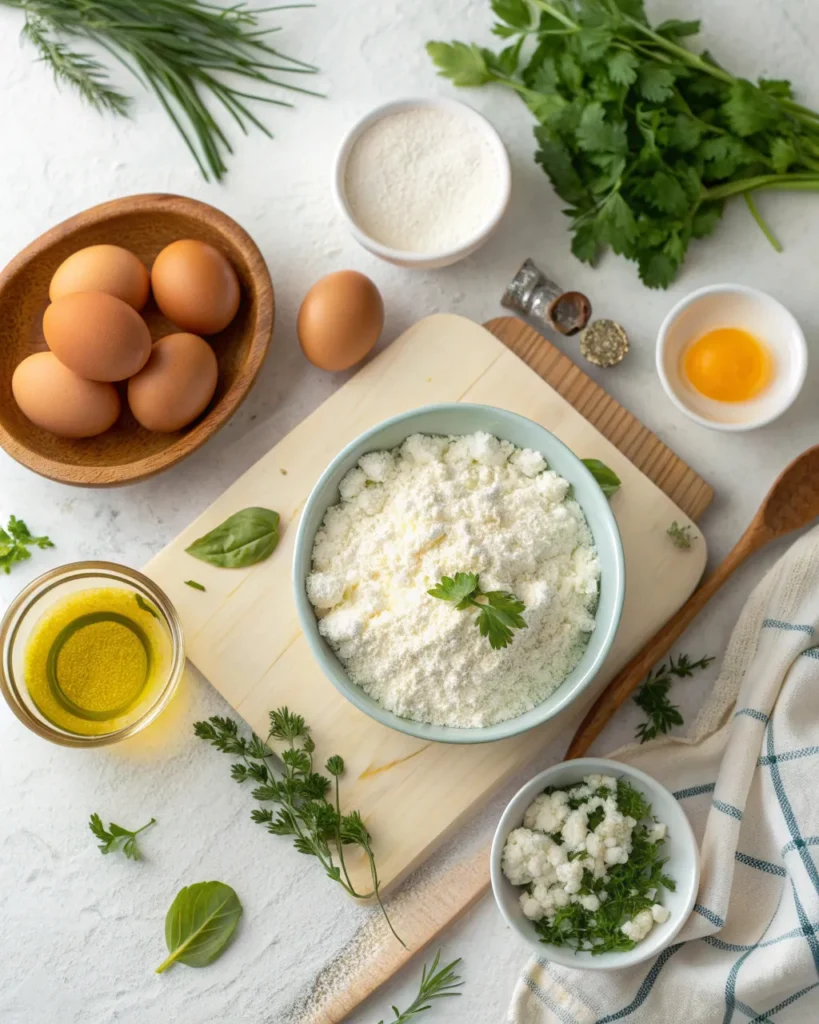
You won’t believe how easy it is to throw this cottage cheese flatbread together. Honestly, once I made it the first time, I stopped buying store-bought flatbread altogether. You only need a few clean, real-food ingredients—and the best part? You probably already have most of them sitting in your fridge or pantry.
Here’s what I use in my go-to version, plus a few options to tweak it based on your taste or what’s in your kitchen.
Cottage Cheese (This Is the Star)
Of course, it all starts with cottage cheese. I always go for full-fat for the flavor and creamy texture, but you can totally use low-fat too. Just avoid super watery cottage cheese—it’ll mess with your dough consistency. If it’s too loose, I’ll strain it a bit or blot with paper towels.
Why it works: It adds protein, moisture, and structure without overpowering the flavor. And no, this flatbread made with cottage cheese doesn’t taste “cheesy” or funky—it’s super neutral.
Want to go the extra mile? Learn how to make homemade cottage cheese to level up this recipe.
Eggs
I use one egg for a small batch, two for a bigger one. It holds the whole thing together and helps create that soft, chewy texture you want in a homemade flatbread. No dry bricks here.
Flour (So Many Options)
This recipe is crazy flexible when it comes to flour. I’ve used all of the following and they all work:
- Oat flour (my favorite for a soft, fiber-rich version)
- Almond flour (low-carb/keto option)
- Gluten-free blend (for my GF people—it keeps things fluffy)
- Whole wheat flour (if you’re not avoiding gluten)
Use what fits your vibe. You’re not locked into anything here, and that’s what makes this easy cottage cheese flatbread recipe so forgiving.
Baking Powder
You only need a pinch—like, ½ teaspoon or less. It helps the flatbread puff just slightly so it doesn’t turn out dense or rubbery.
Olive Oil (Optional, but Worth It)
I like mixing a bit into the dough and brushing a little on top before cooking. Adds richness, helps it crisp up, and gives the edges that beautiful golden finish.
Salt & Seasonings
Don’t skip this. Even a little salt makes a difference. I also throw in garlic powder, dried herbs (like oregano or basil), or even a pinch of za’atar if I’m in the mood. If you want to elevate your healthy flatbread into something restaurant-worthy, this is the move.
Optional Add-Ins (Customize It)
You can stick with the basics or dress it up. Here are a few add-ins I’ve used that turned out really well:
- Chopped baby spinach
- Fresh dill or scallions
- Crushed chili flakes
- Black sesame seeds
- A sprinkle of nutritional yeast (for a cheesy kick without actual cheese)
Whatever you’re craving, you can probably fold it into this high-protein flatbread recipe.
What You Need to Make Cottage Cheese Flatbread at Home
One of the things I love most about this cottage cheese flatbread is that you don’t need any fancy tools or kitchen gadgets to make it work. If you’ve got a bowl and a skillet, you’re basically good to go.
That said, a couple of extra tools can help make the process smoother or give you more consistent results (especially if you’re like me and love a crispy edge).
Mixing Bowl + Spoon or Spatula
This is where it all starts. I just use a medium-sized bowl to mix everything together. A silicone spatula works best for getting into the corners and folding everything evenly, but a big spoon works fine too.
Pro tip: If your cottage cheese is chunky and you want a smoother dough, you can mash it with a fork first.
Blender or Food Processor (Optional, But Handy)
Some days, when I want a super smooth texture (like when I’m making this flatbread with cottage cheese for wraps or mini pizzas), I’ll toss everything in the blender. It gives the dough a creamy, even consistency and makes the flatbread more uniform.
You can absolutely skip this step—but if you’ve got one handy, it’s worth trying at least once.
Measuring Cups + Teaspoons
I usually eyeball stuff (don’t judge me), but if you’re new to baking or want repeatable results, measuring your ingredients helps. Especially the flour—too much can dry out the dough quickly.
Skillet, Griddle, or Non-Stick Pan
You can cook this flatbread recipe on the stovetop in any pan, but a good non-stick skillet gives you the best shot at a clean flip and even browning. Cast iron works too if it’s well-seasoned.
Spatula or Flipper
Once the flatbread starts to set, you’ll want a wide spatula to flip it without tearing. A flexible fish spatula or a classic pancake flipper both work great.
How to Make Cottage Cheese Flatbread – Step-by-Step
Alright, let’s get into the how. Making cottage cheese flatbread is one of the easiest things I do in the kitchen—seriously, once you make it the first time, it becomes second nature.
Here’s exactly how I do it, along with some personal tips to make it foolproof.
Step 1: Blend or Mix Your Batter
If I want a super smooth flatbread, I throw everything in a blender—cottage cheese, eggs, flour, salt, baking powder, and any herbs or spices I’m using. That’s it.
No blender? No worries. Just stir it together in a mixing bowl. Mash the cottage cheese a bit with a fork if it’s chunky—you’re aiming for a thick pancake batter consistency.
Personal tip: If the batter feels too wet (depends on the cottage cheese brand), just add a bit more flour—1 tablespoon at a time.
Step 2: Heat the Pan
Grab your favorite non-stick skillet and let it heat over medium. I usually brush a little olive oil on the pan to keep the edges golden and crispy.
Optional move: Sprinkle some sesame seeds or everything seasoning into the pan before the batter hits. It sticks to the bottom and adds a little crunch—so good.
Step 3: Shape and Cook
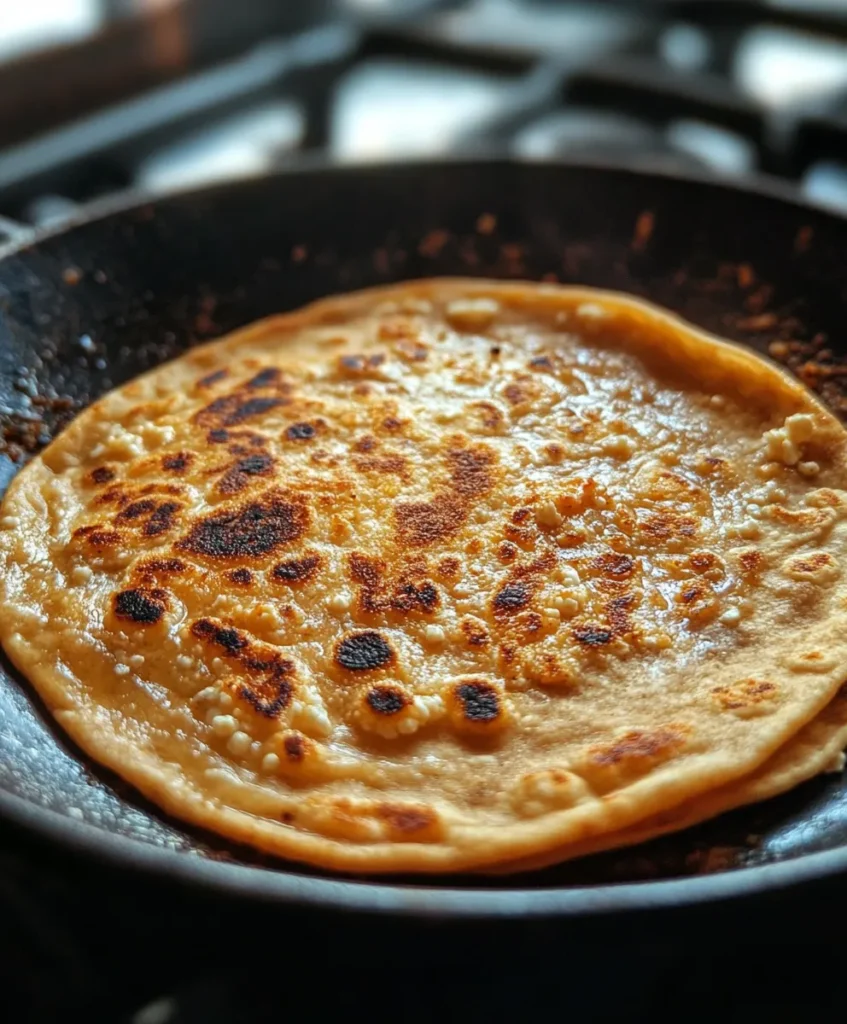
Pour or scoop the batter into the skillet and spread it out into a circle or oval with the back of a spoon or spatula. Don’t make it too thick—you’re aiming for about ¼-inch or so.
Cook for 2–3 minutes per side, flipping once it sets and you see bubbles or golden edges. You want it lightly browned, but not burnt.
If baking instead: Preheat your oven to 375°F (190°C), line a tray with parchment paper, and spread the batter out into flat rounds. Bake for 12–15 minutes, flipping halfway through.
Step 4: Cool and Serve
Let it cool slightly so it firms up. Then slice, wrap, top it with whatever you like—or just tear and dip.
That’s it. No rising, no kneading, no mystery steps. It’s truly an easy flatbread recipe with cottage cheese that just works.
Fun Variations to Try
This cottage cheese flatbread recipe is kind of like your favorite pair of jeans—it works with almost everything. Once you’ve nailed the basic version, it’s ridiculously easy to change things up depending on your mood, what’s in the fridge, or what kind of meal you’re building around it.
I’ve tested a bunch of variations, and these are the ones I keep coming back to.
🔁 Flatbread Variations You’ll Love
| Variation | What to Add | Notes |
|---|---|---|
| Gluten-Free | Use almond, oat, or GF blend flour | Add flaxseed or psyllium for better texture |
| Vegan-Friendly | Use vegan cottage cheese + flax egg | Texture is softer, but still holds together |
| Mediterranean | Add spinach, oregano, garlic | Tastes amazing with olives and feta on top |
| Spicy Version | Mix in chili flakes, cumin, smoked paprika | Perfect for wraps or topped with beans |
| Cheesy Garlic | Shredded mozzarella + garlic powder | Use inside grilled cheese or paninis |
🧠 My Favorite Add-Ins
I’ll be honest—I almost never make this the same way twice. It’s one of those recipes that’s super forgiving and fun to play with. These are some of my go-to mix-ins when I want to level things up:
- 🌿 Chopped herbs (basil, parsley, dill)
- 🧅 Diced red onions or scallions
- 🌶️ Chili flakes or smoked paprika
- 🍅 Sun-dried tomatoes (chopped fine)
- 🍋 Zest of lemon for a bright flavor kick
- 🧄 Crushed garlic or garlic powder
- 🧂 Everything bagel seasoning (right on the pan before cooking)
🔄 Flour Substitution Cheat Sheet
| Flour Type | Texture | Notes |
|---|---|---|
| All-purpose | Classic soft texture | Neutral taste, great if not avoiding gluten |
| Oat flour | Soft, slightly sweet | My go-to for healthy flatbreads |
| Almond flour | Dense, low-carb | Add psyllium or flax for binding |
| Chickpea flour | Nutty, hearty | Good for a rustic, earthy flavor |
| Gluten-free blend | Light and fluffy | Easiest 1:1 swap for standard flour |
Want to serve this cottage cheese flatbread for breakfast? Use oat flour and add cinnamon + a pinch of honey. Or, try these fluffy cottage cheese pancakes if you’re craving something sweet but still packed with protein. Need a pizza base? Use all-purpose flour, spread it thin, and bake it until crispy.
Trust me, once you start customizing, you’ll never run out of ideas.
How to Store and Reheat Cottage Cheese Flatbread
If you’re anything like me, once you start making cottage cheese flatbread, you’ll want to double (or triple) the batch. Good news: it stores really well. Whether you’re making it for the week or stashing some for quick meals, here’s how to keep it fresh.
🧊 Fridge Storage
- Once cooled completely, I stack the flatbreads with a piece of parchment paper between each one to keep them from sticking.
- Place them in an airtight container or seal them in a zip-top bag for storage.
- Keeps well in the fridge for up to 4 days.
Tip: If they start to dry out a little in the fridge, a quick reheat brings them right back to life.
❄️ Freezer Storage
Yep, you can freeze it. I do it all the time.
- Stack flatbreads with parchment between layers.
- Wrap the stack in foil or plastic wrap, then place in a freezer-safe bag.
- They’ll stay fresh for up to 2 months.
🔥 How to Reheat Cottage Cheese Flatbread
| Method | How to Do It | Result |
|---|---|---|
| Stovetop (Best!) | Reheat in a dry skillet over medium for 1–2 minutes per side | Restores crisp edges and soft center |
| Toaster Oven | 350°F for 5–6 minutes | Slightly crisp, great for sandwiches |
| Microwave | 15–20 seconds wrapped in a damp towel | Soft, not crisp — good for wraps |
| Oven | 375°F for 8–10 minutes | Perfect if reheating multiple at once |
Best Ways to Eat Cottage Cheese Flatbread
Here’s the fun part: serving it up.
This isn’t just some plain, dry “health food.” This flatbread is so versatile you can eat it for literally any meal. I’ve used it for quick snacks, full-on dinners, and even breakfast wraps. Below are my favorite go-to ideas.
🥙 Flatbread Sandwich Ideas
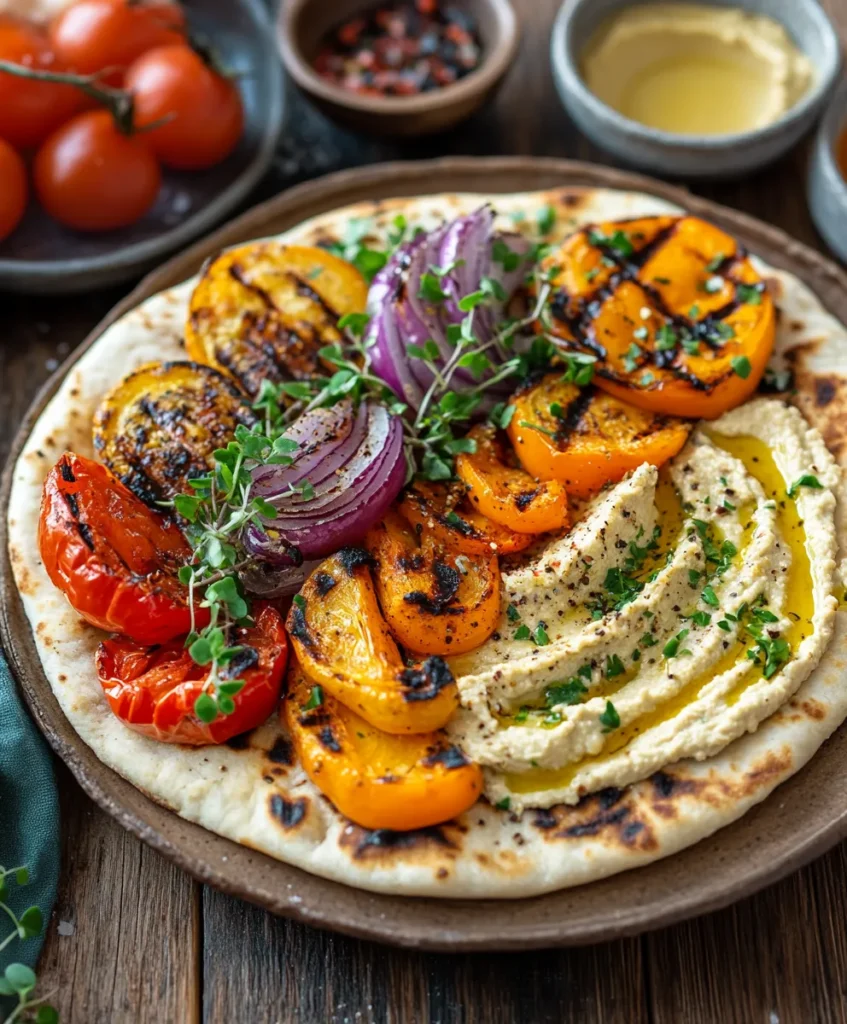
Use it as your bread replacement and load it up with your favorite fillings:
- Hummus + cucumber + shredded carrots
- Grilled chicken + avocado + baby spinach
- Roasted veggies + pesto + feta
- Turkey slices + mustard + arugula
- Scrambled eggs + hot sauce + greens for a killer breakfast wrap
🍕 Quick Pizza Base
I do this at least once a week:
- Spread tomato sauce on the flatbread
- Add mozzarella, veggies, or leftover grilled protein
- Bake or broil until bubbly
- Top with fresh basil or arugula
🥣 Snack or Side Dish
Just warm it up and tear into pieces for dipping. It’s perfect with:
- Tzatziki
- Baba ganoush
- Soup (especially tomato or lentil)
- Smashed avocado with lemon + chili flakes
- Cottage cheese buffalo dip for a protein-rich, spicy kick
💡 Pro Meal Prep Tip
Here’s how I use cottage cheese flatbread in my weekly meal prep:
| Meal Type | How I Use It | Why It Works |
|---|---|---|
| Breakfast | Wrap around scrambled eggs or yogurt + berries | Quick, no sugar crash |
| Lunch | Flatbread sandwich or veggie wrap | Satisfying + protein-packed |
| Dinner | Mini pizza or side with soup | Hearty but still light |
| Snack | Cut into triangles with dip | Better than chips, every time |
Expert Cooking Tips and Common Mistakes to Avoid
Okay, real talk — cottage cheese flatbread is super forgiving, but I’ve definitely had a few flops when I first started messing with the recipe. Over time, I figured out what works, what doesn’t, and what definitely helps take it from “meh” to amazing.
If you’re new to this, here are a few things that’ll make your life way easier.
❌ Mistakes I’ve Made (So You Don’t Have To)
| Mistake | What Happens | Fix It By… |
|---|---|---|
| Too much flour | Flatbread gets dry or crumbly | Add flour a little at a time; stop when dough holds but isn’t stiff |
| Watery cottage cheese | Dough won’t hold together, too soft | Strain or blot the cottage cheese before mixing |
| Skipping oil in the pan | No golden crisp, sticks to the skillet | Use a small brush or drizzle for that crispy finish |
| Spreading it too thick | Center stays undercooked | Aim for about ¼ inch max thickness |
| Using cold pan | Uneven cooking, pale and soft texture | Always preheat the skillet first |
🧠 Expert Tips That Changed Everything
- Use parchment paper if baking — it prevents sticking and keeps the edges clean.
- Double the batch and freeze extras flat — they reheat beautifully.
- Taste your batter before cooking (unless you’re using raw egg) to adjust salt and seasoning.
- Let it cool a bit before slicing — it firms up as it cools, making it easier to cut or fold.
- Want a crispier texture? Cook longer on low heat. Softer? Use slightly more cottage cheese and keep it thick.
FAQs About Cottage Cheese Flatbread
Yup, I’ve gotten a ton of questions about this recipe—here are the most common ones people ask (and yes, I’ve tested all of these myself).
Can I use low-fat cottage cheese?
Absolutely. I’ve made this cottage cheese flatbread with both low-fat and full-fat versions. Full-fat gives a richer flavor and softer texture, but low-fat still works great. Just avoid watery brands or strain them a bit.
Is this flatbread keto-friendly?
It can be! Use almond flour or coconut flour as your base and make sure your cottage cheese doesn’t have added carbs. Skip oat or wheat flour if you’re strict keto.
Can I bake this instead of cooking it on the stove?
Yes, and it works really well! Just spread the batter onto parchment-lined baking sheets and bake at 375°F (190°C) for about 12–15 minutes, flipping halfway. You’ll get a softer, more uniform texture—great for wraps.
Can I use ricotta instead of cottage cheese?
You can, but the texture and protein content will change. Ricotta makes the dough smoother and slightly denser, but it won’t give you the same chewiness or protein boost that cottage cheese flatbread does.
How do I keep the flatbread from falling apart?
A few things:
- Use an egg (or flax egg for vegan version)
- Don’t skip the flour or binder
- Let it cool slightly before moving or slicing
Can I make it without eggs?
Yep. A flax egg works pretty well:
1 tbsp ground flaxseed + 3 tbsp water — let it sit 5–10 minutes until thick.
Texture will be a little softer, but it still holds.
Final Thoughts on This Easy Cottage Cheese Flatbread
If you’re still wondering whether cottage cheese flatbread is worth making, take this as your sign. I’ve made this dozens of times—sometimes for a quick snack, other times as a full-on pizza crust or wrap. It’s simple, satisfying, and honestly just feels good to eat.
There’s no yeast, no mystery ingredients, and no reason not to try it. Whether you’re gluten-free, high-protein, or just trying to eat better without giving up real food, this one checks all the boxes.
When you make it, tag me—I’d love to see your spin on it. Whether you throw za’atar on it, stuff it with hummus, or use it as a breakfast base, this is one of those flexible recipes that just fits into your life.
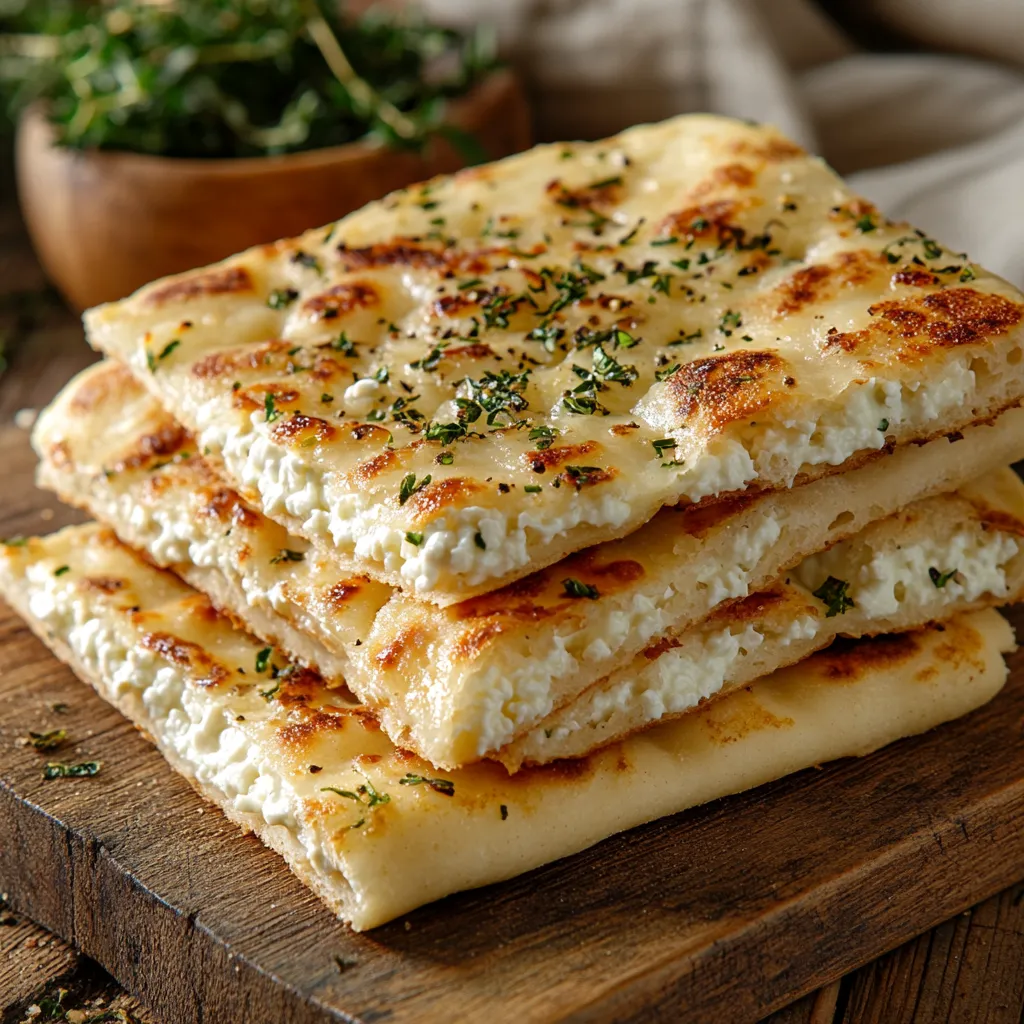
Cottage Cheese Flatbread
Ingredients
Equipment
Method
- Mix cottage cheese, egg, flour, baking powder, and salt in a bowl or blender.
- Preheat skillet over medium heat and add a light coating of oil.
- Pour batter into skillet and spread into a thin circle.
- Cook 2–3 minutes per side until golden brown and firm.
- Let cool slightly. Serve plain or with your favorite dip, wrap, or toppings.
Notes
- You can use almond flour, oat flour, or gluten-free blends based on your diet preferences.
- For a vegan version, replace the egg with a flax egg (1 tbsp ground flaxseed + 3 tbsp water).
- Store in the fridge for up to 4 days or freeze for up to 2 months.
- Reheat in a skillet to bring back the crispy edges and soft center.
- Add flavor with optional mix-ins like garlic powder, herbs, chili flakes, or sesame seeds.
- Great for wraps, dipping, or mini pizza bases — customize as you like.
